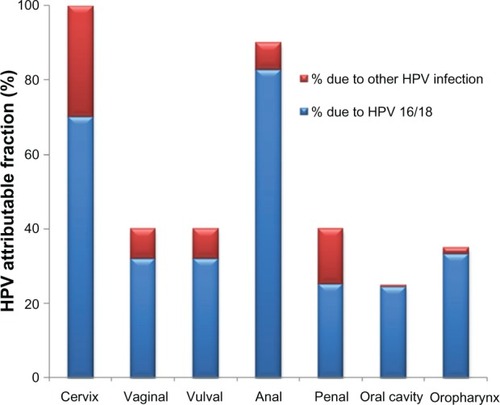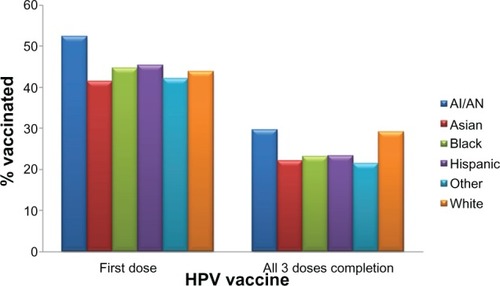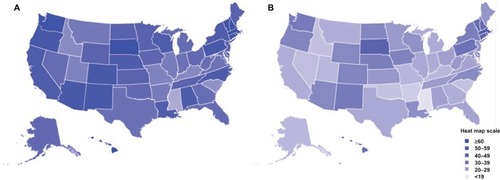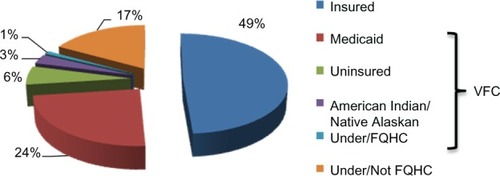Figures & data
Figure 1 Major cancers attributable to HPV infection. Seven cancers are associated with HPV infection, total attributable risk to any HPV infection is shown with blue color referring to HPV types 16 and 18 and the remaining due to other HPV infection (in red).
Abbreviation: HPV, human papillomavirus.

Table 1 New cases of HPV-related major cancers in the USA and worldwideCitation42,Citation100,Citation101
Table 2 Comparison of two HPV vaccines with regard to efficacy, safety, and immunogenicity trial data key to FDA licensureCitation102,Citation103
Table 3 US HPV vaccine licensure and recommended schedulesCitation23,Citation83,Citation102–Citation105
Figure 2 HPV vaccine coverage (in percent) for 13–17-year-old adolescents by race/ethnicity for at least one dose and for complete three doses. The percent coverage is based on data on either Gardasil® or Cervarix® vaccine among 9621 females. Persons who identified as Native Hawaiian or other Pacific Islanders and persons of multiple races were categorized as other.
Abbreviations: HPV, human papillomavirus; AI, American Indian; AN, Alaskan Natives.

Figure 3 HPV vaccination uptake in 13–17-year-old adolescents by state in the USA. Estimated percent coverage for (A) first dose of the HPV vaccine and (B) all three doses of the HPV vaccine.
Abbreviation: HPV, human papilloma virus.

Figure 4 Financial sources among adolescents receiving HPV vaccine. Vaccine is mostly covered by individual insurance, Vaccine for Children (VFC) program (those on Medicaid, uninsured, American Indian or Alaskan Native or underinsured), and Federally Qualified Health Centers.
Abbreviation: HPV, human papillomavirus.
